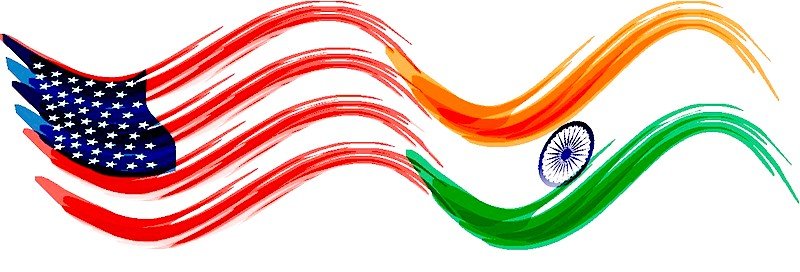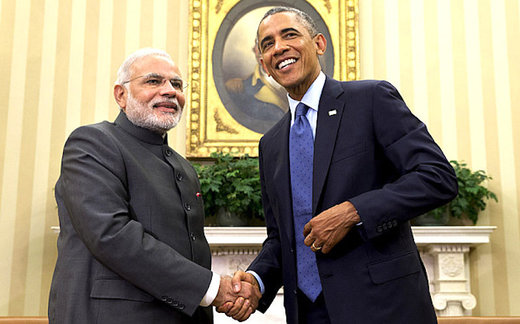And now it seems that it's India's turn. A year ago, US President Barack Obama already paid an official visit to the country to launch a number of joint projects with New Delhi, including the manufacturing of light drones and biohazard suits. This visit created preconditions for Narenda Modi's visit to Washington, which will take place on June 7-8 despite the fact that India's Prime Minister has been under US sanctions for the last ten years.
In order to prepare Modi's visit, India's Foreign Secretary Subrahmanyam Jaishankar arrived to Washington on April 30. The White House Press Secretary announced that Modi and Obama are going to sign a number of bilateral agreements that are meant to be added to Obama's "political legacy." To add some significance to the visit of India's PM, the Oval Office went as far as to support the idea of the Speaker of the U.S. House of Representatives, Paul Ryan, who wants to invite Narenda Modi to deliver a speech in front of both houses of Congress.
Press TV would note:
Indian papers reported on Friday that US lawmakers' recent approval of a defense bill will put the country at par with NATO allies. This would mean that Washington could in future treat New Delhi as a closer partner and might sell it more defense equipment and technology.US analysts believe that Obama will try to use Modi's visit to lift the restrictions on the activities of the American companies in India (including tax reviews and customs regulations), push for the improvement of intellectual property laws in this country, and force India into countering China's growing influence in Asia-Pacific through a number of defense deals. In this context, Washington hopes that this would allow the US to further strengthen its position as a major global arms supplier.
To eliminate all the differences Washington had with New Delhi in regional matters, the Obama administration refused to subsidize the purchase of American F-16 fighter aircraft by Islamabad which India opposed heavily due to its poor relations with Pakistan.
In a bid to save face for the White House, the spokesperson for the Department of State, John Kirby, announced that the US won't fulfill its promise to subsidize Pakistan's expenses due to the ever growing pressure on Congress regarding budgetary constraints, although Pakistan is still a "reliable ally". John Kirby went as far as claiming that the position of American legislators contradicts America's long-term interests in the region.
However, some US experts are convinced that the Obama administration is using Congress as an excuse to relieve tensions in its relations with New Delhi. The stakes are pretty high, namely multi-billion dollar contracts with India, and, what is more important, the chance to make India a part of ongoing US efforts to contain China.
The Morning News USA would note:
Talks between the two countries have resulted to US-India Defense Technology and Trade Initiative (DTTI). Through DTTI, American and Indian officials have discussed sharing technology and boosting business ties between the two countries' defense industries.According to new leaks from US military circles, Washington has convinced New Delhi to begin talks on ways to counter the growth of China's submarine fleet and its presence in the Indian Ocean by developing a plan to "squeeze" them out. In practical terms the US wants to put the initial stages of this plan into motion during the course of the July joint naval exercises in the northern region of the Philippine Sea.
According to US experts, India in turn, wants the United States to share with them technology, intensively invest in the Indian economy and remove barriers to the expansion of Indian exports to the United States, all of which that could serve as a favorable basis for further development of bilateral US-India relations.
However, a considerable number of experts are convinced that no matter what tricks the White House might employ, India's agenda is fully committed to multi-directional pragmatic policies that they've been long-pursuing. For this reason, along with the history of 'bumpy' bilateral relations, it's highly unlikely that New Delhi's politicians would agree to pursue Washington's ideas of confronting any of its regional neighbors, no matter how successful Modi's visit might be.
Martin Berger is a freelance journalist and geopolitical analyst, exclusively for the online magazine New Eastern Outlook.





India is overestimating its ability to control itself in this dance. If history is of any guide, US looks only for vassals, not independent opined partners. We only needs see how US controls NATO countries like Germany, britain with spying, color revolutions, arm twisting etc. It corrupts, poisons the entire fiber of the nations. We can only hope Modi realizes this sooner. When one dances with devil, they become devil.